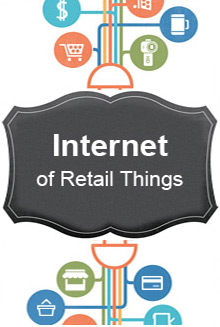While ‘Brand Strength’ may not figure on traditional balance sheets, not a single enterprise will deny how important it is for long-term organizational success. Measuring ‘brand sentiment’ therefore has always been a key objective, especially for the CMO. Traditional market research approaches often relied on questionnaires being circulated (physically or electronically), data being collected, and analysis being done with the entire process being cumbersome, expensive and time consuming.
Switch to the digital world. With social media platforms available and just a tap away from your smartphone, the ability for any consumer to express her or his opinion on just about anything, is ridiculously simple. Such consumer generated content sometimes includes the sentiments, emotions, reactions and experiences that consumers have with various brands. Deriving sentiment metrics from such consumer generated content is becoming increasingly important for brands today.
This has given rise to a new breed of software platforms that are optimized to monitor the social media universe for mentions of the brand along with ‘keywords’ to be monitored. With such platforms, vast amounts of unstructured data are pulled in from a variety of sources. This is not easy since it’s not just the velocity and volumes of consumer content that needs to be monitored but also the number of sources – The social media universe is much more than facebook and twitter. The data pulled in then needs to be filtered to remove the 90% – 95% of ‘noise’ that typically exists. The remaining 5% – 10% that contains useful information, then needs to be analyzed for figuring out metrics related to brand sentiment. The resultant numbers represent brand sentiment in the ‘open digital universe’ – perhaps useful for some of the larger brands with a worldwide presence.
The interesting thing is when we start considering other brands. What about a hospital with an annual patient base of 500,000 patients in a particular city or state? What about a travel and hospitality company with a registered user base of 200,000 customers? What about a shopping mall or retail store with around 100,000 footfalls a month? An online education company with a registered student base of 200,000 students a year? For such brands, what would be more important?
- Brand sentiment measured from the ‘open digital universe’ OR
- Brand sentiment measured specifically across that customer base that they are serving
I would suggest, the latter. For such brands, sentiment measured from standard social media channels and representing the open digital universe may not really mean much. What is really, really important is the brand sentiment of a section of customers. The travel and hospitality company would like to know the brand sentiment of customers who actually visited their resorts over the last year. The hospital would want to monitor brand sentiment across the patients who have visited the hospital in the recent past. The shopping mall would want to ensure that customers who have visited the mall have had a great experience, have positive sentiments, and will visit the mall frequently.
This does not mean that brand sentiment measured from open social media channels is not needed at all. The point is that in my opinion, there are several brands for whom the ability to monitor and measure sentiment across a specific target customer base would be more important.
My recommendation on how brands can achieve this, is to have an ability to engage with the target customer base in a structured, sustained manner, consistently over time. Sustained consumer engagement will have the direct benefits of increased positive sentiment. Sustained engagement will also provide avenues to measure and monitor brand sentiment related metrics, for that target customer base. The simplest such metric could be a happy, neutral and unhappy sentiment derived from engagements with your customers. A more advanced metric would be a brand sentiment score, computed as a number on a scale of 1 to 10, for example, and plotted as a graph over time showing a brand sentiment trend.
Since consumers today are digital, it is important that brands seek to engage with them through digital channels such as online and cloud based software, mobile devices, and social media. Digital consumer engagement, if implemented and executed well, has the potential to measure brand sentiment in a quantifiable manner and help answer the age old question: “What do my consumers really feel about my brand?”

Shantanu is a former Happiest Mind and this content was created and published during his tenure.







